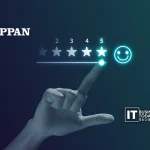パナソニック オートモーティブシステムズ株式会社とトレンドマイクロ株式会社の子会社である株式会社ビックワンは、次世代コックピットシステムのコンテナ環境に対応するセキュリティソリューションの機能を拡張し、技術検証を完了しました。
本セキュリティソリューションは、パナソニック オートモーティブシステムズが2024年10月に発表した攻撃検知・防御ソリューション "VERZEUSE(R) for Virtualization Extensions Type-3 "の機能を拡張し、ビックワンの車載用組込みセキュリティソフトウェア "xCarbon "を統合したものです。
これにより、AGL(Automotive Grade Linux)リファレンスボード上でコンテナ間通信の効率的な監視が可能になり、次世代の自動車コックピットシステムへの適用が確認されました。
こちらもお読みください: CyCraft、LLMの脅威から身を守るXecGuardを発表
本セキュリティソリューションは、2025年8月24日から28日までアトランタで開催される「第31回ITS世界会議2025」に出展します。
パナソニック オートモーティブシステムズ社の「VERZEUSE(R) for Virtualization Extensions Type-3」は、車外ネットワークとの接続により攻撃者の侵入リスクが高まるソフトウェア領域(車両制御仮想マシン上のインフォテインメントシステムコンテナなど)と、制御機能やソフトウェア更新機能など車両にとって重要な機能を持つソフトウェア領域(車両制御仮想マシン上の車両制御コンテナなど)との通信を監視します。監視機能を隔離されたコンテナ内に配置することで、セキュアな領域から通信を監視し、不審な通信を検知・遮断します。これにより、重要な車両機能をサイバー攻撃から保護し、車両の安全性を高めます。また、この方式は、仮想化環境を利用した次世代コックピットシステムに求められるセキュリティ要件にも適合しています。
ビックワンが提供する「xCarbon」は、サイバー攻撃を検知・防御する自動車向け組込みセキュリティソフトウェアです。VERZEUSE(R) for Virtualization Extensions Type-3」の拡張インターフェースと連携することで、コンテナ間の通信データを監視し、脆弱性や通信異常を悪用した攻撃から次世代コックピットシステムを守ります。さらに、「VERZEUSE(R) for Virtualization Extensions Type-3」がリスクの高い通信を選別して「xCarbon」に渡すことで、より効率的なセキュリティ監視を実現します。
近年、SDVの進化やネットワーク接続車両の増加に伴い、車両を狙ったサイバー攻撃などセキュリティ脅威のリスクは高まるばかりです。2021年1月、国連は「車両サイバーセキュリティ規制UN-R155」を制定。日本では、2022年7月以降に販売される一部の車両から適用が開始され、2026年5月以降に販売されるすべての車両に適用される予定です。この規制により、十分なサイバーセキュリティ対策が施されていない車両は安全基準を満たさず、販売できなくなります。これにより、自動車メーカーや関連企業にとって、セキュリティ対策はこれまで以上に重要なものとなります。
パナソニック オートモーティブシステムズ そして ビックワン は、今後も次世代自動車コックピットシステムのサイバーセキュリティ強化に貢献していきます。
ソース PRタイムズ






